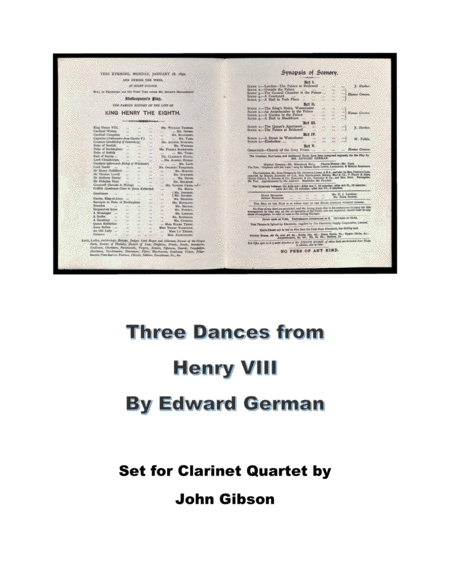Woodwind Ensemble,Woodwind Quartet Bass Clarinet,E-Flat Clarinet - Level 5 - Digital Download SKU: A0.581975 Composed by Sir Edward German. Arranged by John Gibson. 20th Century. 54 pages. JB Linear #3628939. Published by JB Linear (A0.581975). Edward German's Three Dances from Henry VIII set for Clarinet Quartet by John Gibson. Before motion pictures it was common to have incidental music performed during plays. These three dances by Edward German (composed 1892) are fun and very British. The three dances are Morris Dance, Shepherd's Dance, and Torch Dance. It is arranged for clarinet quartet (2 Bb Clarinets, Alto, and Bass).
